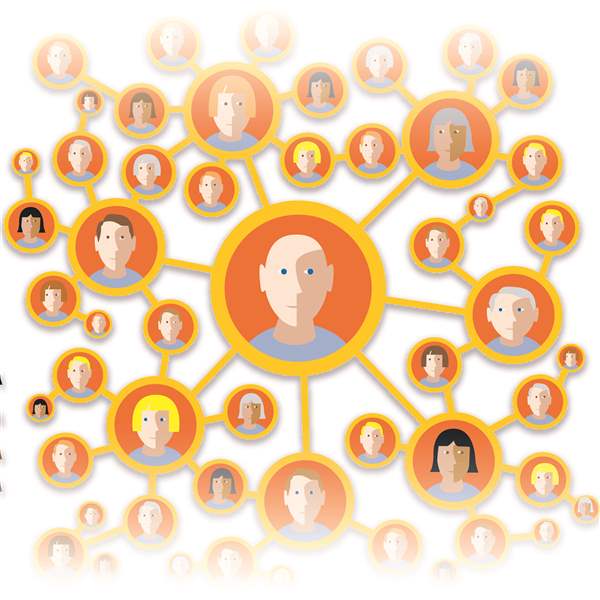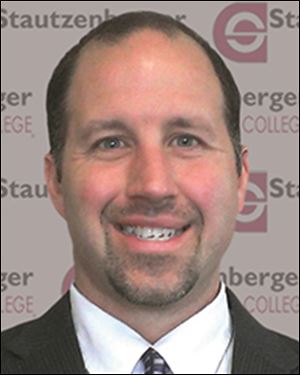
With millions of members, LinkedIn has become a must-have career tool
3/16/2014
Comedian-actor Stephen Colbert nailed it when he joked on his show last spring, “Business networking site LinkedIn is cracking down on prostitutes. Now if they’ll just crack down on those people who keep inviting me to join LinkedIn.”
The truth is, for many of us, LinkedIn is the red-headed stepchild of social media, an employment opportunity site we’ve either long ignored or joined years ago -- sold on the distant promise that it would somehow benefit our career path -- and promptly forgot. That is, until those annoying emails with requests to connect with other LinkedIn members reminded us of our inattentive account status.
RELATED: LinkedIn profiles should be awesome, not average
But as we’ve been busy liking “Throwback Thursday” photos on Facebook or tweeting our disapproval of a celebrity romance, LinkedIn has quietly expanded in popularity and prominence.
There are now more than 93 million registered members in the United States and nearly 280 million worldwide, according to LinkedIn, numbers made even more impressive considering the site launched in the living room of co-founder Reid Hoffman in 2002.
Since then LinkedIn has evolved from an online destination for the tech savvy wanting to broaden his or her network into an imperative employment tool for most everyone else.
“LinkedIn is a still-growing resource for companies to source candidates," said Stacie Moss, vice president of Staffing Services with Job1USA, a national employment solutions service headquartered in Toledo. “[And] it’s an important tool in [an employee’s] toolbox in terms of searching for employment, even if they’re casually seeking opportunities.”

O'Donnell
Added Amy O’Donnell, an associate lecturer for career development in the College of Business and Innovation at The University of Toledo: “... With waning recruiting budgets, employers need to find ways to recruit the best and brightest talent, be they entry-, mid-, or senior-level candidates who possess the requisite skills they need to fill their positions.”
“In my opinion, [LinkedIn] is a ‘must-have’ for all professionals and surely for job seekers,” she said.
Getting Connected
"Networking" is a buzzword among those searching for jobs if for no other reason than it works.
“It’s one of the things we tell people all the time, that networking is a key process for finding employment or improving an employment situation,” said Micahel Veh, Workforce Development Manager for OhioMeansJobs Lucas County (formerly The Source Northwest Ohio).
LinkedIn makes that process easier and broader.
“It allows you to connect with people you may not know or may not know well,” he said, adding, “It also shows a little bit of computer skill or knowledge, which is always helpful.”

Garver
Rob Garver, Career Services Director at Stautzenberger College in Maumee, calls LinkedIn "your business card of today."
“How many people have a Rolodex of business cards sitting on their desk? I daresay none," he said. "But if you’re going to get a hold of someone, how are you going to do it? If you’re going to connect to someone, how are you going to do it? I’m suggesting it’s going to be LinkedIn or through your smartphone.”
As part of the curriculum in some of the Stautzenberger College courses, in fact, students are required to create a LinkedIn account.
“It helps students be successful as students but also touches on how to be successful in the workplace,” Mr. Garver said. “Our mission is to get jobs for graduates. And in order to do that, LinkedIn is one important component.”
Creating a LinkedIn profile is also mandatory for Mrs. O’Donnell's students.
“The thing is, not everyone who is using LinkedIn is using it to the level they should be, nor are they taking full advantage of its capabilities or of actively and intentionally building their brand,” she said. “If I poll students in class and ask them how many of them are using LinkedIn daily, I’ll get a few hands. If I insert Facebook as the alternate platform for social media, the majority of hands fly up.
“I’ll grant you, many employers are using Facebook to recruit and research candidates; however, if anyone is going to start building their brand somewhere, they need to be on LinkedIn first.”
Finding Jobs
While an associate recruiter with a local recruitment service, Renee McClaran used LinkedIn daily.
“I posted jobs on it and reached out to potential candidates to ask, ‘I have this position available. Do you know of anyone or are you interested?’”
The trend was more people joining LinkedIn as part of their social media profile, though the majority of candidates Ms. McClaran vetted didn’t have an account. But when switching careers more than a year ago to become the staffing coordinator at Medical Staffing Network, she didn’t use LinkedIn. And since then, Ms. McClaran hasn’t been that active with the site.
“I don’t do as much as I should,” she said. “I’m very happy with my position so I don’t make a big deal out of it as much as I did when I was looking for a new position.”
But what happens when you have a job you desperately want to leave?
In the case of Edward, who asked not to use his full name, it's best to proceed cautiously and not link up with coworkers while “aggressively” pursuing new employment.
“I am basically waiting to reach out to coworkers [on LinkedIn] until after I made a move,” he said. “It does report if you add a contact” to others linked to the profile, so connecting with a recruiter “would be pretty obvious. It would raise some red flags, as far as I’m concerned.”
Actively job shopping on the site has so far proven worth the risk.
“I’m contacted fairly regularly by recruiters. I’ve had one face-to-face interview with a really great opportunity. And I’ve had others too through LinkedIn,” Edward said. “It’s going well."
While we think of LinkedIn as a job-sourcing destination for employees and companies, similar to Monster.com or CareerBuilder.com, that's only one facet of the site.
LinkedIn also keeps members professionally connected, even as they switch jobs and careers, and helps business professionals share information and discuss industry trends and events, or even to research companies, noted Mr. Veh.
"It's not designed to be a job search tool," he said. "It's designed to be a networking tool. But it works as a job tool as well."
Contact Kirk Baird at kbaird@theblade.com or 419-724-6734.